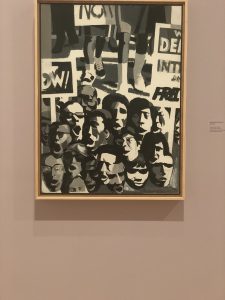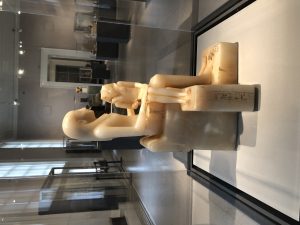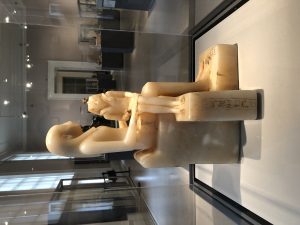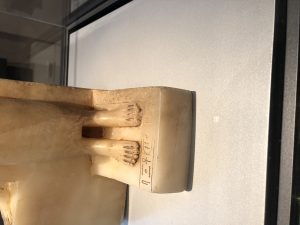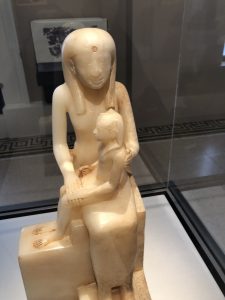Part 1:
One artwork from the ancient world that caught my eye was “King Ashur-nasir-pal ll and a Winged Genie” in the Assyrian Palace Reliefs. Throughout the reliefs, you are able to see carved images of genies called apkallu. These genies were believed to serve King Ashur-nasir-pal and can be either eagle headed or human headed. In the artwork of King Ashur-nasir-pal ll and a Winged Genie, you are able to tell apart the king and his protective genie by the crown that the king is wearing. You can also see that the genie is facing the king asserting his obedience towards the king. The King also has a sash wrapped around his crown which shows the kings high status in Assyria. You can also see the king holding a bow which probably symbolizes warrior-like activities such as hunting. Throughout the reliefs, you can also see that most of the reliefs have genie’s holding pinecones towards a sacred tree. In this artwork, you can see the king holding a small bowl with his arm bent at a 90-degree angle meaning the bowl is probably filled with some sort of liquid. This can symbolize some sort of offering to a deity. I also noticed the king’s legs are all covered by his robe but the robe of the genie exposes one of his legs. This shows that the king probably isn’t as active as the genie where they’re constantly serving and protecting their king. The repetition throughout the reliefs of serving the king and tending to the sacred tree shows the importance of kingship and the culture of the Assyrians.
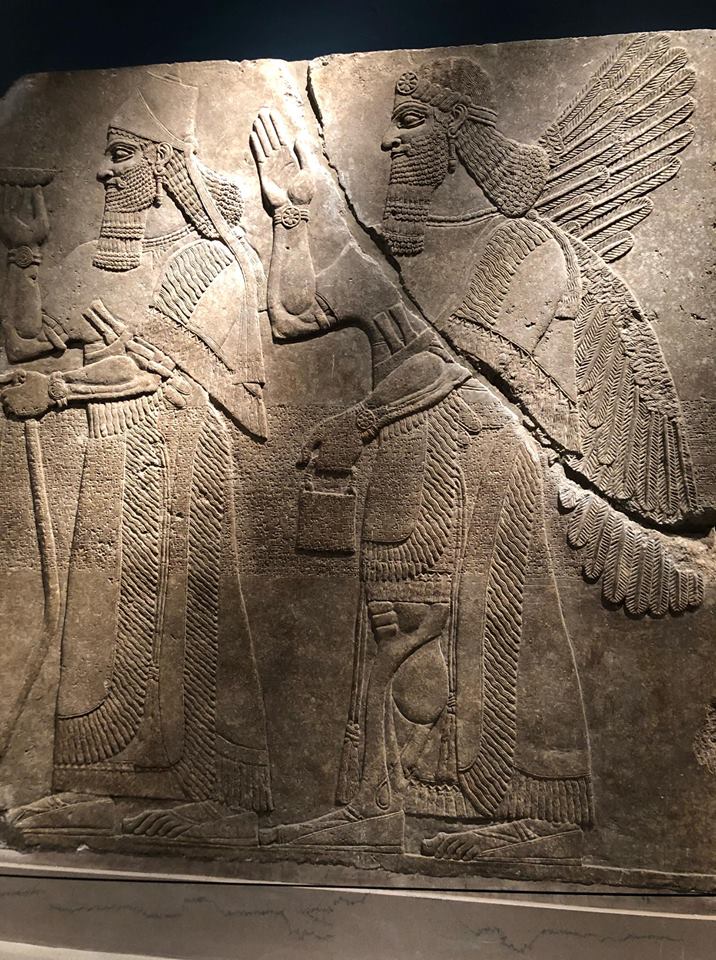
Part 2:
The artwork that stood out to me the most in Soul of a Nation was “The Flag is Bleeding” by Faith Ringgold in 1967. In this painting, you can see the American flag dripping with blood. Starting from the left, we can see an African American man holding his heart which seems to be the source of blood throughout the artwork. In his hands you can see a knife which indicates Ringgold’s emphasis on the violence in the 20th century. Moving along the painting, you can see a woman in the middle with her arms conjoined with a white man and the African American man. The painting seems to be split in half where the the left and right side of the woman’s face looks completely different. This may indicate the sympathy for African Americans as the woman’s face on the left side with the African American seems to be way more humanlike whereas the right side seems to look more evil. Despite the sympathy in the woman, she is ultimately controlled by the white male. This artwork by Ringgold symbolizes the systematic oppression and discrimination that African Americans had to face in the 1960’s. I chose this piece because of the ongoing inequality that America still faces today. This piece by Ringgold clearly depicts how America was built on slavery. “The Flag is Bleeding” relates to the other exhibits because it shows how the society and culture was at the time. The Assyrian Palace Reliefs emphasizes kingship and “The Flag is Bleeding” emphasizes the discrimination against African Americans.
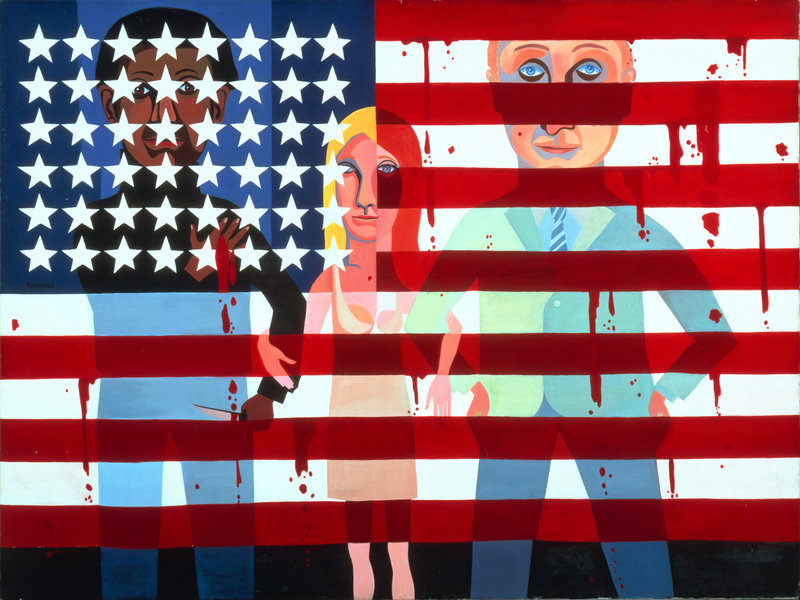
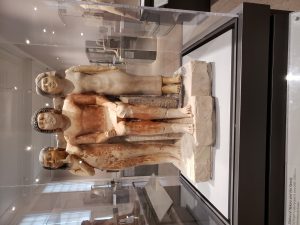
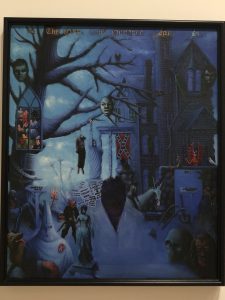


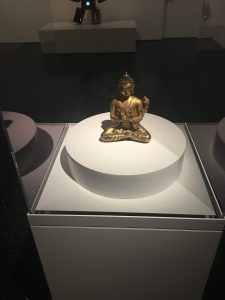


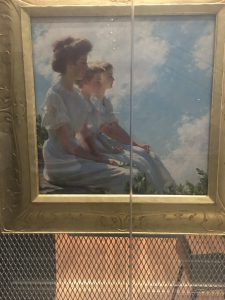


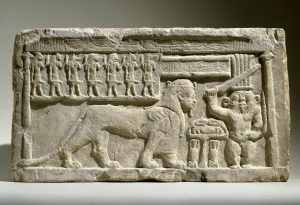
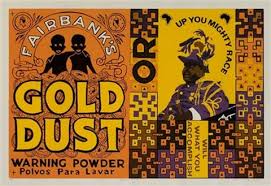
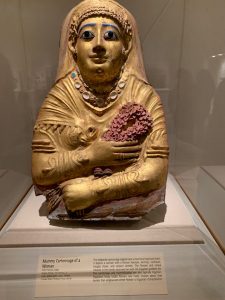
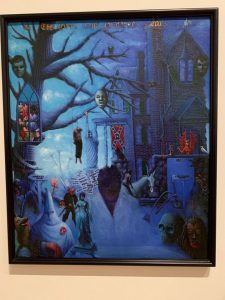 head floating on the tree, and the broken stained glass on the tree. This is such a powerful piece because it shows the artist trying to put in all the troubles that the African Americans suffered through. The brightest part of this whole painting is the white clouds that looks like it’s on the horizon with the crosses out of the clouds, but right in front of it is the protest for freedom and a crucifixion on fire. This is one of Motley’s last piece after finishing within the span of 10 years, and I would say this a great last piece of his to portray the Black social life.
head floating on the tree, and the broken stained glass on the tree. This is such a powerful piece because it shows the artist trying to put in all the troubles that the African Americans suffered through. The brightest part of this whole painting is the white clouds that looks like it’s on the horizon with the crosses out of the clouds, but right in front of it is the protest for freedom and a crucifixion on fire. This is one of Motley’s last piece after finishing within the span of 10 years, and I would say this a great last piece of his to portray the Black social life.